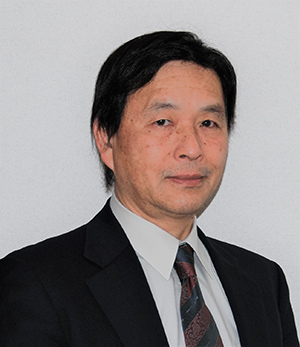Health issues caused by the rising temperatures associated with climate change have increased dramatically in recent years. Record heat waves in Europe caused more than 60,000 deaths last year, while a sharp increase in climate disasters such as floods and droughts in Africa have led to worsening food security and the spread of infectious diseases. Japan is no exception, and the number of “Heat Stroke Alerts” issued by the Ministry of the Environment continues to rise each year. This year, the number exceeded 1,000 for the first time since the alerts began, with escalating numbers of people being transported to emergency rooms due to heat stroke.
In this edition of the COSMO newsletter, we sit down with Dr. Yasushi Honda, Professor Emeritus of Sports Science at the University of Tsukuba to get his take on the health risks posed by climate change; the key facts you need to know; and how the healthcare industry should respond. Read on to the end for Dr. Honda’s full profile.
Climate change most affects those with “underlying medical conditions”
It seems the issues surrounding climate change have garnered increasing attention around the world in recent years. People in Japan are familiar with heat stroke, but what are the other health risks that we should know about?
The chief effect of rising temperatures is an increased risk of death, with those affected by underlying medical conditions being particularly vulnerable. Recent findings indicate that sweltering nights also increase the risk of death for people in this group. In addition to the extreme heat during the day, high temperatures persisting at night and making it difficult to sleep can also exacerbate health risks. Moreover, statistics show that suicides and homicides are more common on days with high temperatures.
Looking at the bigger picture of the effects of climate change, disasters such as floods and droughts can cause loss of life, as well as PTSD and depression. Agricultural production declines and hunger becomes an issue. In developed countries, even if there is no starvation, mental health problems can occur, such as farmers committing suicide due to crop failures. Additionally, if people have to spend extended periods living in evacuation centers due to disasters, this increases the risk of stroke and other such fatal conditions.
In this way, climate change majorly impacts many different sectors. It is safe to say that the effects of climate change are being felt across society, with the final bill to surely be paid in the form of health costs.
Which demographic is most at risk from this mix of physical and psychological effects?
Those at greatest risk are those with underlying medical conditions such as cardiovascular disease, respiratory disease, and diabetes. For example, heart disease, including heart failure, is a direct cause of death, and respiratory diseases can also put stress on the heart. Renal disease has similarly been shown to be aggravated by rising temperatures. It is also speculated that the stress caused by climate change and rising temperatures can lead to a weakened immune system, making people more susceptible to infection and development of mild summer colds and other illnesses. It is possible that this may also be contributing to the onset of COVID-19 infections.
What can you tell us about people losing their lives as a result of rising temperatures?
As far as Japan is concerned, the direct risk of death has been steadily decreasing, partly due to the widespread introduction of air conditioners in the home and workplace. On the other hand, as was the case this summer, the number of extremely hot days itself is increasing, and as a result, the number of people with underlying medical conditions who die in such extremely hot weather is believed to be rising.
In the past, it was thought that the deaths of the elderly and people with underlying medical conditions in extremely hot weather was a case of a short-term acceleration of mortality, or “hastening the inevitable.” However, a research group I’m in has since found that those who lost their lives due to rising temperatures would have survived for at least another year if there had been no temperature rise, so the health risks from rising temperatures are by no means limited to a “hastening of the inevitable.”
What about the risk of heat stroke?
It is not uncommon for heat stroke patients to be admitted to emergency rooms every day, with a surprisingly small percentage of these leading to death. However, if a person has an underlying medical condition, the commonly-advised heat stroke countermeasure of “replenishing fluids, sugar, and salt (electrolytes)” may itself aggravate the underlying medical condition. It is important to understand that meticulous measures must be taken to prevent heat stroke in such groups.
Basic heat stroke countermeasures: “Appropriate use of air conditioning and replenishment of fluids”
Could you share some more specifics about heat stroke countermeasures for those with underlying medical conditions?
A popular heat stroke countermeasure today is the use of electrolyte-containing beverages, or so-called sports drinks and oral rehydration solutions. There is no problem with these beverages when used appropriately by healthy people, but for patients with diabetes, hyperglycemia, or hypertension, the regular consumption of these beverages containing sugar and sodium is not appropriate. Careful heat stroke countermeasures are required according to the individual’s background and condition, but this point is not yet fully understood, including by medical professionals. Basic heat stroke countermeasures in the presence of hyperglycemia or hypertension center on the use of appropriate air conditioning and the intake of fluids, and water alone is sufficient. If you can eat properly at each meal and do not sweat profusely, especially from sports, then there is no need for additional sodium intake. Additionally, air conditioning should be used appropriately.
As the name implies, sports drinks are intended to quickly replenish the fluids lost from the body when sweating excessively during exercise or other intense activities. If, for example, an elderly person who spends most of their day at home consumes these beverages on a regular basis, then they may inadvertently consume excessive amounts of sugar and sodium. The Japanese diet is already high in salt, so there is no need for additional sodium. On the other hand, if you go to work without breakfast or sweat profusely during strenuous exercise such as playing soccer, you need to replenish lost water and sodium by consuming sports drinks. In such cases, sports drinks are recommended because they are more easily taken in than water.
Risks of mosquito-borne infections continue to rise
Is climate change also bringing about an increased risk of infectious diseases?
In the case of Japan, the dengue fever-carrying Asian tiger mosquito (Aedes albopictus) has been observed to be moving northward in its range. In 2014, a small outbreak of dengue fever was confirmed in Tokyo, transmitted by Asian tiger mosquitos in Yoyogi Park and other areas. According to the National Institute of Infectious Diseases (NIID), the habitat of the Asian tiger mosquito has reached the northern tip of Honshu (Japan’s main island). If no measures are taken, it is feasible that an outbreak of dengue fever could occur at a gathering in the Tohoku region, such as a summer festival. With this in mind, mosquito control is also an important measure.
Are there any other infectious diseases spread by mosquitoes that we should be concerned about?
Yes, there are other viral infectious diseases such as chikungunya fever and the Zika virus, which may also spread in Japan. On the other hand, malaria and Japanese encephalitis, which are also widely known to be transmitted by mosquitoes, are unlikely to become widespread in modern Japan. In particular, Japanese encephalitis is not likely to be a major problem because the percentage of people who become ill from this disease is very low if they are well nourished.
Why is the risk of infectious disease increasing now?
Firstly, mosquitoes are expanding their habitat due to rising temperatures. In addition, the ease of movement of people has made it possible for disease-carriers to come to Japan from overseas. It takes only a few hours to travel from Southeast Asia to Japan, where dengue fever and chikungunya fever are endemic. In fact, Tainan City in southern Taiwan is currently experiencing a dengue fever outbreak. With the current increase in inbound travel, it is possible for asymptomatic travelers to enter the country and develop these diseases in Japan.
The health care industry response must be to share correct knowledge and behavior
What can the healthcare industry do to address these issues?
Regarding rising temperatures, I think it is important for healthcare professionals to be aware that the risk of death increases with rising temperatures among those with underlying medical conditions. For example, in the case of heart failure, management of water metabolism is very important, so we cannot ask patients to drink a lot of water just because they are dehydrated. The most important thing is to create a situation in which the patient does not perspire profusely, i.e., room temperature control through the appropriate use of air conditioning. It is important that this knowledge becomes widely known, not only among those with underlying medical conditions. In particular, with regard to hydration, the media tends to emphasize the intake of both water and electrolytes, but in reality, we need better awareness that every individual requires personalized care.
In terms of curbing emissions of greenhouse gases, which are the cause of global temperature rise and climate change, it is important for everyone to think about reducing the use of fossil fuels and achieving a carbon-neutral world through energy conservation and other such measures. On the other hand, the current increase in temperature has reached a level where it is no longer possible to consider it a one-off disaster, which is why it is important to use air conditioning properly on hot days. A temperature setting of 28°C is recommended, although this may feel a little chilly for the elderly because our basal metabolism decreases with age. In such cases, it is acceptable to set the temperature slightly higher. Also, the temperature setting of the air conditioner and the temperature where you are located differ. It is important is to check the temperature of the place where you actually spend your time and adjust the setting to one that is comfortable for you, without getting caught up on the recommended temperature. We believe that the healthcare industry has potential to play a greater role in sharing accurate knowledge and behavior.
As for the effects on mental health, these issues might cause mental instability, which may appear in the form of an increase in suicides and homicides. In such cases, it is important to alleviate the effects to some extent with medication. However, some anxiolytics (mild tranquilizers) can cause dependency issues, and sustained usage can lead to withdrawal symptoms at a later date. The development of less addictive anti-anxiety drugs is one of the things we would like to see from the healthcare industry.
Is the relationship between climate change and mortality supported by data?
The causal relationship between climate change and death has already been clearly proven by decades of statistics. On the other hand, medical cost reimbursement statements (receipt data), which are used to examine the causal relationship between diseases and deaths, are still difficult to utilize as research data because of the high hurdles involved in utilizing such data for research purposes. I think that reviewing the rules and standards to make it easier to utilize such data is a key issue to be addressed.
What are the key things readers should be aware of or work on in the future?
Mild symptoms of heat stroke include dizziness and muscle stiffness, including cramps. If you experience these symptoms, you should immediately move to a cooler place and rest. Hydration is essential in this case, and consuming salt is also helpful for muscle stiffness. If further nausea or headaches occur, you should seek medical attention or consult a health care provider immediately. Moreover, be alert to anyone around you experiencing similar symptoms. Of course, if the condition has reached the point of losing consciousness, you should call an ambulance immediately. Proper knowledge and actions are important to save lives. And finally, I would like to stress again the importance for more of us, including medical professionals, to be better informed about the appropriate heat stroke countermeasures when treating people with underlying medical conditions.
| Profile: Dr. Yasushi Honda Professor Emeritus, Sports Science, University of Tsukuba; Visiting Researcher, Center for Climate Change Adaptation, National Institute for Environmental Studies; Visiting Professor, Nagasaki University A graduate of the University of Tokyo’s Faculty of Medicine, Dr. Honda worked there as an assistant professor before assuming research roles at the National Institute of Public Health, the University of Alabama at Birmingham, and the National Institute for Environmental Studies. He was appointed associate professor at the University of Tsukuba in 1998, going on to become professor emeritus in 2020. During his tenure there he has was lead author of the 4th and 5th Intergovernmental Panel on Climate Change reports. He has also served as a WHO expert, assisting global warming adaptation efforts in Palau, the Federated States of Micronesia, Mongolia, and other countries. |
 |
For more information on climate change and health risks
●Dr. Honda’s research page
https://researchmap.jp/read0162965?lang=en
●Friends of WHO Japan, “Climate Change and Health” (Japanese only)
https://japan-who.or.jp/factsheets/factsheets_type/climate-change-and-health/
●Ministry of Health, Labour and Welfare, “Information and Resource Site for Prevention of Heat Stroke” (Japanese only)
https://www.mhlw.go.jp/stf/seisakunitsuite/bunya/topics/bukyoku/kenkou/suido/nomou/
●A-PLAT: Climate Change Adaptation Information Platform
https://adaptation-platform.nies.go.jp/en/
●MCC Study related papers
http://www.ag-myresearch.com/publications.html
Previous COSMO PR Newsletters
●Spotlight on Women’s Health in Japan: The role of femtech in the lives of women
https://cosmopr.co.jp/en/womens-health-in-japan-en/
●The current state of women’s mental health in Japan: How should we respond to deepening challenges brought about by the pandemic?
https://cosmopr.co.jp/en/the-current-state-of-womens-mental-health-in-japan-en/
●Women’s mental health advice from a medical practitioner in the field: The importance of creating a supportive atmosphere for those experiencing mental health issues
https://cosmopr.co.jp/en/womens-mental-health-advice-en/
●Solving Challenges Around Rare and Intractable Diseases Through Stakeholder Collaboration
https://cosmopr.co.jp/en/solving-challenges-around-rare-en/
●Healthcare and the Environment: Understanding the Movement around PFAS
https://cosmopr.co.jp/en/healthcare-and-the-environment-en/
https://www.niid.go.jp/niid/en/iasr-vol36-e/865-iasr/5464-tpc421.html
https://www.niid.go.jp/niid/en/iasr-vol41-e/865-iasr/9916-484te.html
https://www.jhf.or.jp/check/heart_failure/13/






